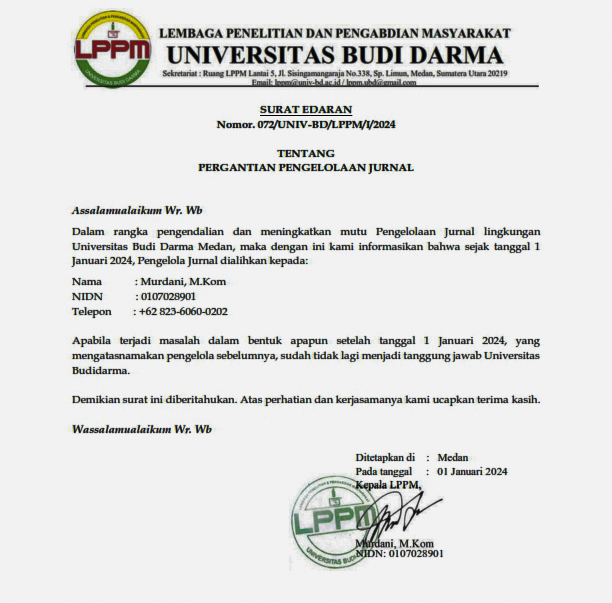PENERAPAN ALGORITMA K-MEDOIDS CLUSTERING UNTUK PENGELOMPOKKAN PENYEBARAN DIARE DI KOTA MEDAN (STUDI KASUS: KANTOR DINAS KESEHATAN KOTA MEDAN)
DOI:
https://doi.org/10.30865/komik.v3i1.1659Abstract
The health office is in charge of instructing and registering diarrhea sufferers in each region, then the area will be evaluated which areas are most affected by diarrhea. And checking directly into the field revealed that the most basic cause was about the unclean environment such as trenches that were too much garbage, causing floods during the rainy season. The health office also encourages the community to always maintain environmental cleanliness and familiarize people to always wash their hands with soap before eating and after cleaning with simple things like this is expected to help reduce diarrhea sufferers in the city of Medan. K-Medoids Clustering is clustering algorithm which is similar to K-Means. The difference between these two algorithms is the K-Medoids or PAM algorithm uses the object as a representative (medoid) as the center of the cluster for each cluster, while the K-Means uses the mean (mean) as the center of the cluster.
Keywords: Diarrhea, Service office, Data mining, K-Medoids Algorithm
References
Fina Nasari. 2016.Penyakit Diare. Andyanastri festy, 2012. Semarang
Florin G. 2011.Data Mining.GrahaIlmu 2011.Yogyakarta
Dyang Falila Pramesti.2017. Proses Data Mining Dalam Penemuan Pengetahuan Database . junaedi, Hartanto 2011. Yogyakarta
Mustalim. 20015. Definisi Data Mining Astuti Fajar. Yogyakarta
PurbaYugi Trianto.2005 Arsitektur Data Mining Hermawan.Yogyakarta
Kaur. 2004 Algoritma K- Medoids Dheerendra. 2014. Yogyakarta
Dinas Kesehatan 2006 Diare
Edi Susanto, 2019 Aplikasi RapidMiner Yudi 2009. Jakarta
Adi Kusrianto, 2010 Tampilan Microsoft excel





